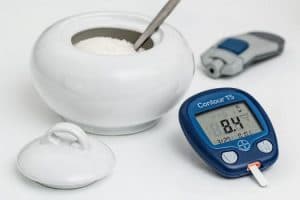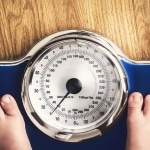In the NY Times today, there was a provocative article about the application of applied mathematics to the obesity crisis: http://www.nytimes.com/2012/05/15/science/a-mathematical-challenge-to-ob…
Carson C. Chow , an investigator at the National Institute of Diabetes and Digestive and Kidney Diseases, is interviewed here discussing his work in the arena. What he’s found is two things that don’t make for easy answers but at least provide some targeted responses.
First, a calorie is NOT a calorie. That is, in a test tube, yes, but in a human, as calories are added or subtracted, too many other mechanisms come into play that affect the actual output. Thus, an obese person is more capable of gaining weight on fewer calories than is a lean person. Also, a lean person has a harder time gaining weight because of cellular and hormonal mechanisms that help him metabolize food better. Finally, while it might be expected that someone would lose a pound if they cut 3500 calories from their lives via diet and/or exercise, the reality is – and I have written on this before based on another article that may not have mentioned Chow’s name but did address his conclusions – it might take 3 times as long as the deficit creation in order to see the expected results.
That is, if someone cut 100 cals/day from their diet, it would, in theory, take 35 days to lose a pound. In fact, it may take 100 days. now, these small changes – often prescribed to make wt management more palatable – are still worth making, but people want faster results so what happens if they cut out 500 cals from their lives, either by diet or exercise? Simple – they lose wt, faster.
But it’s not sustainable wt loss, as anyone who has crash dieted can attest. The reason is much of that initial wt loss is, of course, water, from cells that are lower in glycogen, or carbo calories. or if done via sudden bursts of exercise, again, mostly water wt because it’s too soon to have lost fat or built muscle. Spread out over a year’s time, a consistent effort to deduct calories from one’s life will generally yield about a third of the expected results. Again, this is based on complex math, complex physiology, and pretty consistent long term wt loss method data.
Second, and this reflects on both cause and potential policy, much of the increase in obesity over the past 35 yrs has been due to the reduced cost of food in general. more efficient farming, better output, the rise of cheap foods making for cheap and faster foods at restaurants, and the subsequent rise if marketing of foods, esp to KIDS!!! – all have contributed to the excess consumption of not just americans, but all over the world.
Chow does not excuse nor blame but he does attribute the obesity crisis to both parties – buyers and sellers. nonetheless, it is mostly a supply side event: more available, and who’s not going to take advantage of it? And so we do.
Which brings him and us to the final piece: how to slow down the increase of obesity? or maybe even stop it? He suggests more limits on ads for food products to kids. interestingly enough, the king of supply side economics, Ronald Reagan himself, perpetuated some of the advertising when, during his administration -and I’m not say he personally or politically implemented the laws but…. – the restriction against advertising to kids was lifted. Sure there were always commercials for cereal, drinks, cookies, and other things.
But something changed and so did we. Sometimes freedom of speech must be curtailed, esp if it causes riotous rushes to the exits in a theater. In this case, maybe we need to curtail free speech and let parents make decisions before kids become aware of how yummy this or that would taste. But then, again, sometimes we parents simply need to make better decisions for ourselves and our kids, and not let TV influence our judgement.
But then, again, maybe cows can fly.
oh well….














